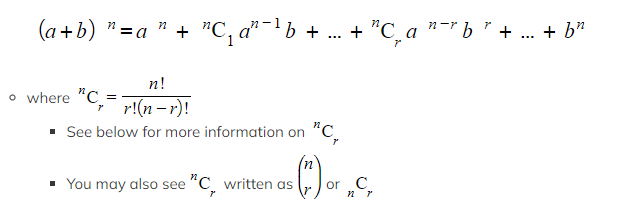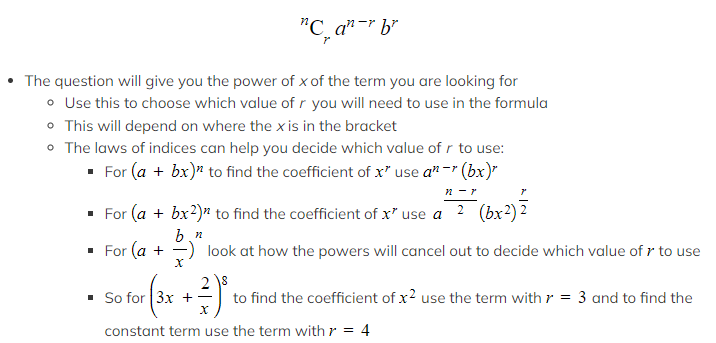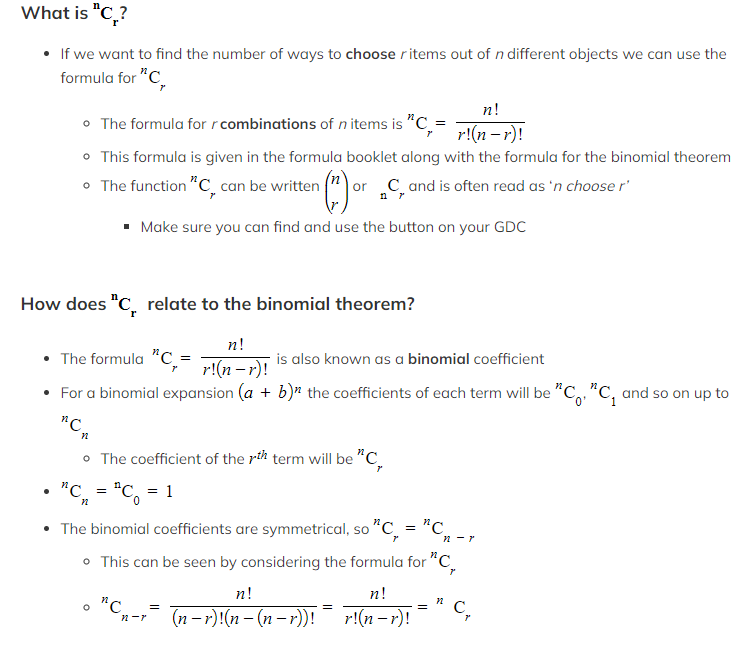- 翰林提供学术活动、国际课程、科研项目一站式留学背景提升服务!
- 400 888 0080
IB DP Maths: AA HL复习笔记1.6.1 Binomial Theorem
Binomial Theorem
What is the Binomial Theorem?
- The binomial theorem (sometimes known as the binomial expansion) gives a method for expanding a two-term expression in a bracket raised to a power
- A binomial expression is in fact any two terms inside the bracket, however in IB the expression will usually be linear
- To expand a bracket with a two-term expression in:
- First choose the most appropriate parts of the expression to assign to a and b
- Then use the formula for the binomial theorem:

- You will usually be asked to find the first three or four terms of an expansion
- Look out for whether you should give your answer in ascending or descending powers of x
- For ascending powers start with the constant term, an
- For descending powers start with the term with x in
- You may wish to swap a and b over so that you can follow the general formula given in the formula book
- If you are not writing the full expansion you can either
- show that the sequence continues by putting an ellipsis (…) after your final term
- or show that the terms you have found are an approximation of the full sequence by using the sign for approximately equals to (≈)
How do I find the coefficient of a single term?
- Most of the time you will be asked to find the coefficient of a term, rather than carry out the whole expansion
- Use the formula for the general term

-
-
- There are a lot of variations of this so it is usually easier to see this by inspection of the exponents
-
- You may also be given the coefficient of a particular term and asked to find an unknown in the brackets
- Use the laws of indices to choose the correct term and then use the binomial theorem formula to form and solve and equation
Exam Tip
- Binomial expansion questions can get messy, use separate lines to keep your working clear and always put terms in brackets
Worked Example
![]()

The Binomial Coefficient nCr Exam Tip
Exam Tip
- You will most likely need to use the formula for nCr at some point in your exam
- Practice using it and don't always rely on your GDC
- Make sure you can find it easily in the formula booklet
Worked Example
![]()

Pascal's Triangle
What is Pascal’s Triangle?
- Pascal’s triangle is a way of arranging the binomial coefficients and neatly shows how they are formed
- Each term is formed by adding the two terms above it
- The first row has just the number 1
- Each row begins and ends with a number 1
- From the third row the terms in between the 1s are the sum of the two terms above it

How does Pascal’s Triangle relate to the binomial theorem? Exam Tip
Exam Tip
- In the non-calculator exam Pascal's triangle can be helpful if you need to get the coefficients of an expansion quickly, provided the value of n is not too big
Worked Example
![]()

转载自savemyexams

最新发布
© 2025. All Rights Reserved. 沪ICP备2023009024号-1









